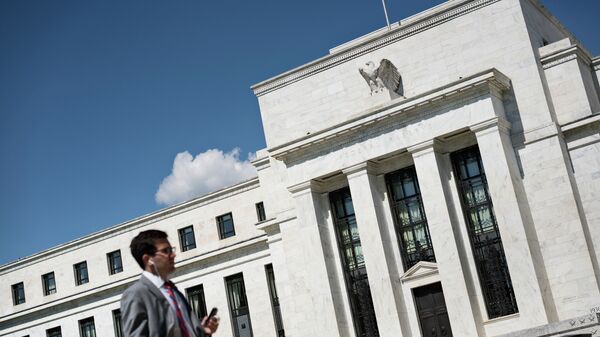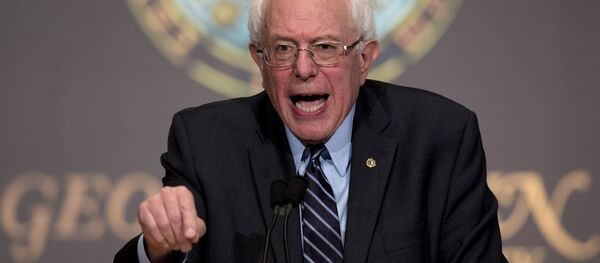Kristian Rouz – The pace of US economic expansion decelerated twofold in the third quarter as American enterprises have faced increasing headwinds to their overseas performance due to the dollar’s strength.
The US economy added a relatively healthy 2% in Q3 after a revision from the 2.1% reported last month, the Department of Commerce announced Tuesday. The data indicated a sharp slowdown compared to the previous quarter’s performance, when US GDP expanded an impressive 3.9%. The current pace of growth is still above the previous estimates as Bloomberg consensus forecast was 1.9% for Q3.
A combination of international headwinds slashed almost half of the US’s economic performance. The dollar’s strength is still a major negative factor for many US-based multinationals, severely battered in the foreign markets, where the ongoing ‘currency wars’ have significantly impaired the competitiveness of American goods and services.
Insufficient growth or dramatic economic turmoil in overseas markets have contributed to a sharp decrease in demand for what the US-based enterprises have to offer, meanwhile, the reshoring of America’s manufacturing facilities is protracting.
US business investment and government spending were also insufficient to support a quicker pace of expansion during the July-September period.
On the income side, however, the US economy added an annualized 2.7% instead of the previously reported 3.1% due to the still strong consumer demand and decreasing inventories. US enterprises had some $85.5 bln worth of raw material stockpiles in Q3, and the still lingering inability or unwillingness (due to the low prices) of the American businesses to put those into processing slashed the overall growth by 0.71%.
As American businesses have struggled to sell their merchandise in the overseas markets, inventory processing braked in Q3. This tendency is likely to persist into Q4 and year-end growth is now expected at about 2% as well due to milder winter conditions.
“Consumption is a big piece of it, and it’s chugging along,” Tim Quinlan of the Charlotte, NC-based Wells Fargo Securities said. “It’s hard to be really enthusiastic about the outlook for trade and business investment,” he added.
Indeed, US consumer spending, contributing some 72% to the overall US economic expansion, was upbeat during the July-September period. The measure rose 3.0%, in line with previous estimates. Improvements in the labor market, bank savings and fairly low yet solid inflation have all supported domestic consumption.
Business spending added an annualized 9.9% compared to 9.5% in Q2. US exports slowed having added only 0.7% year-on-year, while imports advanced due to the dollar’s strength, consequently, the US trade deficit increased, slashing 0.26% off Q3 GDP expansion.
The federal government’s capital investment is expected to accelerate to 2.6% throughout 2016 as suggested by its current dynamics, supporting economic expansion into the next year, Goldman Sachs said on 18 December, immediately after the US Federal Reserve increased borrowing costs.



